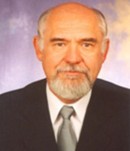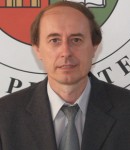
Plenary Lecture
Web Usage Mining and E-learning
 |
 |
|
Professor Imre J. Rudas President of Obuda University Hungary E-mail: rudas@uni-obuda.hu |
Dr. Peter Toth Director of Trefort Ágoston Centre for Engineering Education Obuda University Hungary E-mail: toth.peter@tmpk.uni-obuda.hu |
Abstract: There are several opportunities for checking and evaluating the level of students’ work, knowledge acquisition and assessment within the framework of traditional classroom and laboratory sessions.
However, the situation is completely different in the case of e-learning. Seemingly there are not at all any tangible tools in one’s hands whereby the process of knowledge acquisition or the fact whether students have understood or not the information to be learned could be checked. Problems of comprehension and, through those, the possible shortcomings or faults of the content or structure of the electronic syllabus can only be concluded from students’ products (submitted tasks, test results). A further source of information comprises forum discussions and online conversations in this respect. Questionnaires are a frequently applied yet formal means of the exploration of learning difficulties or course evaluation. Interviews or case studies both seem appropriate methods, however, their application in great numbers appears to be quite time-consuming.
The above limitations and problems can be eliminated by the use of data mining methods. In an electronic learning environment the data of the student – learning object interaction are stored in a database on the server without anyone’s knowledge. By the application of online and offline web mining algorithms and methods these databases may become „subject to inquiry”. As a result, a lot of useful information may be gained as to tutoring, evaluating and developing courses.
Web mining methods allow us to draw conclusions about certain cognitive processes, strategies and learning specialities, as well as to determine and tipify particular learning habits and difficulties. Two cognitive maps are to be recognized of the context of syllabus-developer – electronic syllabus – student. To be more exact, two cognitive maps are collated. One of them has been conceived and created by the developer and the other one is the map as finally realized by the student. Their comparison enables the recognition of certain learning characteristics. The simpler a cognitive map is, the simpler its inner representation, or, the more complex it is, the more time it takes to understand and take note of. The simplest possible cognitive network which is repeated with all learning objects needs the least possible attention on the part of the student during navigation, therefore emphasis falls on the acquisition of information located in the clusters.
The web mining methods applied in the course of the examination were as follows:
- Frequency analysis: the download of syllabus elements shows how far students have got in processing the syllabus, which objects they use frequently or not at all.
- Sequence analysis: it serves the examination of students’ click-series. It shows which objects students have visited in succession and how much time they have spent processing each.
- Cluster analysis: groups may be formed according to learning characteristics, which are appropriate for distinguishing student types, learning styles and strategies.
The following aspects of course development have been formulated through these examinations:
- The exact definition of learning objectives and requirements at the beginning of the course
- The establishment of the relation with prior knowledge
- The logical set up (modular set up by hierarchy and sequence) and exposition of the syllabus (highlighting the essence and dividing the object through screen design)
- Knowledge transfer through the manifold applications of the acquired skills during the course (several practice test handouts)
- Learning guidance, the promotion of the formation of a competent knowledge structure (eg. screen design, questions, animations, summaries)
- Raising and continuously maintaining attention, motivation through practical screen design, a varied set of media, a transparent navigation system, regular feedback and a permanent tutorial presence
- Involving students by a continuous allotment of tasks, the solution of self check tests and forum discussions
- The advocation of communal learning through tasks of collaboration and cooperation (eg. wiki, forum, glossary)
- The reproductive and productive application of the acquired material (the communal and later individual solution of tasks and problems)
Brief Biography of the Speakers:Prof. Dr. Imre J. Rudas graduated from Bánki Donát Polytechnic, Budapest in 1971 and received the Master Degree in Mathematics from the Eötvös Loránd University, Budapest while the Ph.D. in Robotics from the Hungarian Academy of Sciences in 1987. He is active as the President of Obuda University and as a professor of John von Neumann Faculty of Informatics.
Prof. Rudas is a Fellow of IEEE, Administrative Committee member of the Industrial Electronics Society, member of the International Board of the Robotics & Automation Society, Chairman of the joint Hungarian Chapter of these Societies, and RAS and IES Chapter Coordinator of Region 8. He is also a registered expert of the United Nations Industrial Development Organization and the EU.
He is the President of the Hungarian Fuzzy Association and Steering Committee Member of the Hungarian Robotics Association and the John von Neumann Computer Society.
Prof. Rudas serves as an associate editor of IEEE Transactions on Industrial Electronics, member of editorial board of Journal of Advanced Computational Intelligence and Control Engineering Practice, member of various national and international scientific committees. He is the founder of the IEEE International Conference Series on Intelligent Engineering Systems Prof. Rudas was the General Co-chair of ICAR2001, and also serves as General Chairman and Program Chairman of numerous scientific international conferences.
His present areas of research activity are: Robot Control, Soft Computing, Computed Aided Process Planning, Fuzzy Control and Fuzzy Sets. Prof. Rudas has published more than 280 papers in various journals and international conference proceedings.
Dr. Peter Toth Peter is a professor of Trefort Ágoston Centre for Engineering Education at Obuda University, Hungary where he is participating in technical initial teacher training and in-service training courses. Currently he is a director of the Centre.
He earned his MSc in Engineering Education at the Budapest University of Technology and Economics, and Peter Toth has Ph.D degree in Educational Research from Eötvös Loránd University.
He plays leading role in planning, development and managing traditional and virtual engineering programs. Dr. Toth is doing research on pedagogy of virtual learning environment, improvement of problem-solving thinking and analyzing of spatial abilities in engineering education. His actual research area is analysis of students’ activities and behavior in virtual learning environment by web mining methods.
He has been contributing in some European researches and projects on pedagogical aspects of e-learning and development of creativity and abilities of future engineers and teachers as well. He is member of Committee for Teacher Training of Hungarian Rectors’ Conference and secretary of Informatics Section of Pedagogical Committee of Hungarian Academy of Sciences. Dr. Toth has issued about 60 papers in several journals and conference proceedings.